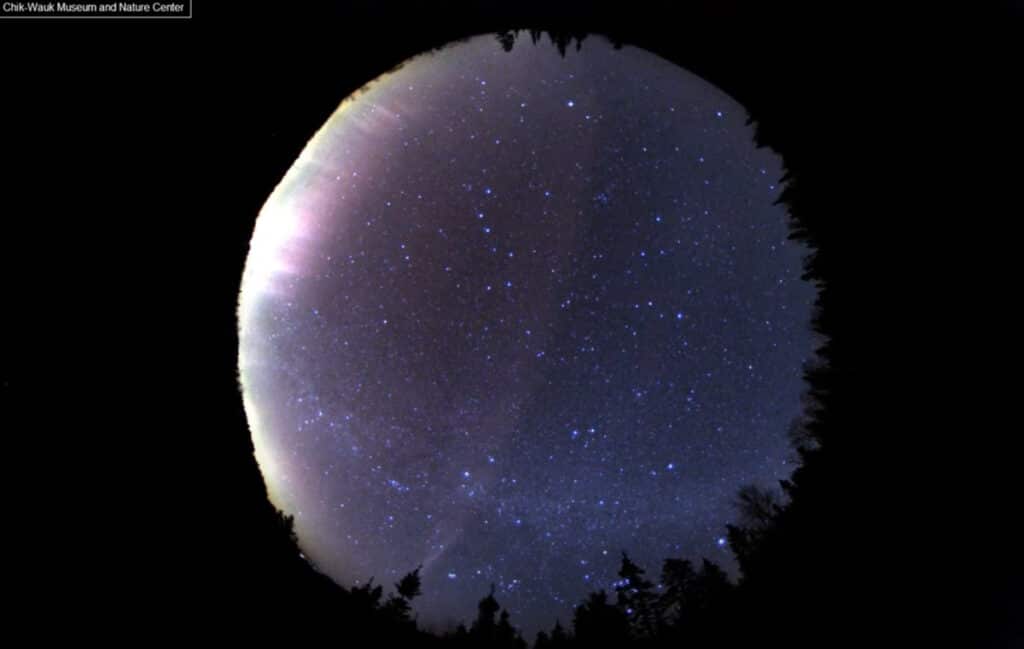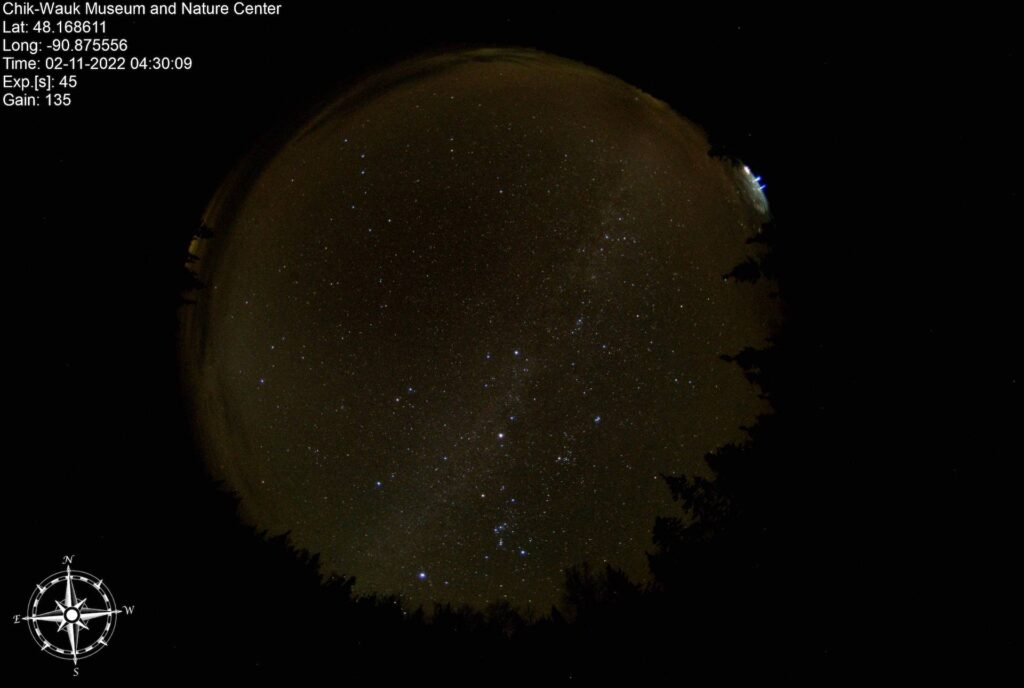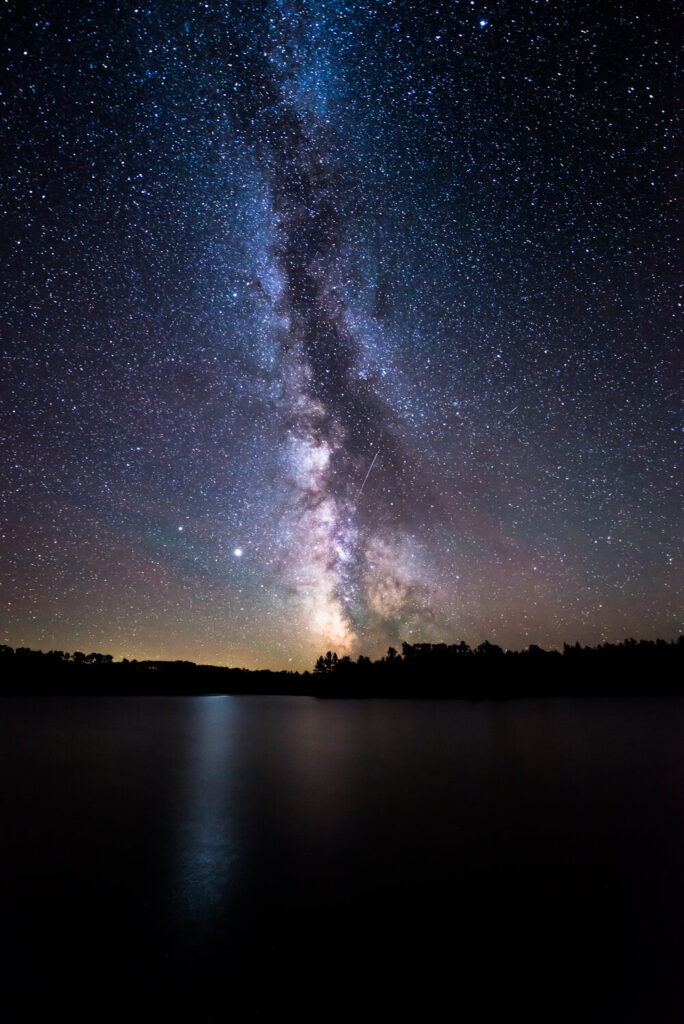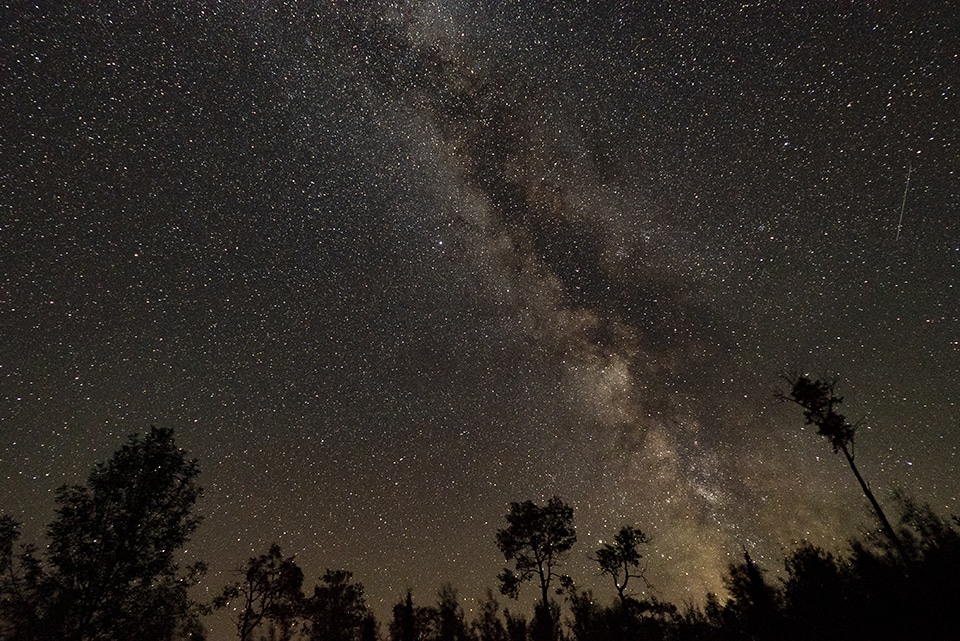
The Quetico-Superior region’s famously dark night skies have received international recognition in recent years. In 2020 and 2021, Voyageurs National Park, Quetico Provincial Park, and the Boundary Waters Canoe Area Wilderness received dark sky designation from the International Dark Skies Association.
With light pollution now affecting most people on the planet, natural views of stars, northern lights, and other celestial sights have become popular reasons for visiting the region. Some local organizations have been helping connect people and the night sky.
Dark night skies were the rule for almost all of human existence. It was only the invention of electricity and the light bulb in the past two centuries that darkness began to disappear. Stars and constellations have long been parts of human civilization and spirituality, including Indigenous cultures. Both of the new projects being initiated include helping explain and interpret Native American cultural traditions about the night sky.

Skies on the move
Voyageurs Conservancy recently received an $80,000 grant from the National Parks Foundation to educate Minnesota students about darkness, light pollution, and related topics. They will convert a large van into a Dark Skies Mobile Classroom dedicated to sharing night skies, according to Great Lakes Echo.
The van will help address one problem with dark sky education: school programs are usually during the day. One item Voyageurs Conservancy plans to include is a Solar Scope, which lets users safely look at the sun. The group will also update its curriculum to include Indigenous information.
“So right now, in general and at Voyageurs National Park, current dark sky programming is really centering on Western European constellations and understanding of the night sky and astronomy,” Megan Noetzel, Voyageurs National Park Association’s membership and communications manager, told Great Lakes Echo. “But Voyageurs National Park is obviously located on land that was and continues to be deeply connected to the Anishinaabe, Ojibwe and other Indigenous people who have thrived on this land for generations, and they have a very rich cultural heritage connected to the night sky.”
Programming with the mobile classroom will begin next summer at Voyageurs National Park, and then visit schools around Minnesota in the 2023-2024 school year.



Eye on the sky
A museum and nature center with a unique location surrounded by wilderness is also getting involved in Dark Sky education, Northern Wilds reports. The Chik-Wauk Nature Center and Museum near the end of the Gunflint Trail has worked with the University of Minnesota-Duluth planetarium over the past two years to implement technology that gives people around the world a glimpse of the dark skies of the Boundary Waters.
Two years ago, a special camera pointed at the sky went online, showing views of the stars and more in real time. The AllSky camera took years to get online, but it has provided a popular perspective. The camera captures and uploads images every 30 minutes during the night, and compiles a timelapse video every morning.
“This site has remarkably dark skies which leads to amazing night sky viewing,” Chik-Wauk says on its website. “Its northern latitude also means higher chances of seeing aurora.”
Now, the museum has formed a Dark Sky Committee, which is exploring other ways to expand their astronomical programming. The museum says members of the Anishinaabe community are key contributors to the committee.
More information:
- National Park Foundation boosts North Country Trail hikers, Minnesota students – Great Lakes Echo
- Chik-Wauk partners with Duluth Planetarium – Northern Wilds
- Dark Sky Cam – Chik-Wauk Museum and Nature Center

